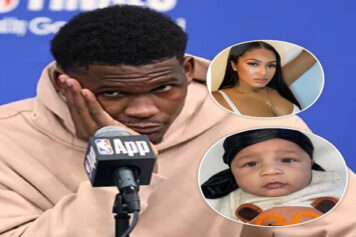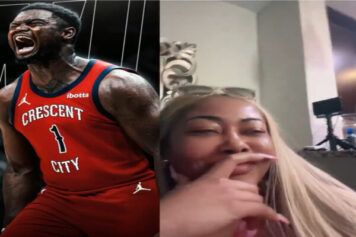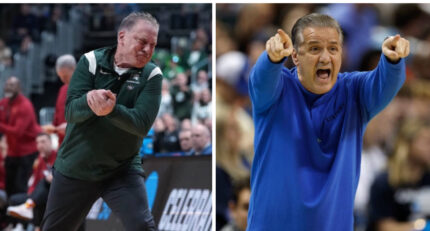For all of the crimes that the NCAA says its looking into, the biggest crime is that it’s stealing from its own players.
As the Sweet Sixteen gets underway this week, folks are gearing up for what promises to be another exciting and memorable few games as the NCAA Tournament marches toward the Final Four.
The buzzer beaters, bracket busters and Cinderella’s will take center stage alongside the individual stars and coaching icons that will carry their team to this year’s National Championship. Surely, it’s the most exciting time of year for many sports fans.
And it’s also a time to revisit the question, given the revenues that March Madness generates, of athlete compensation.
The NCAA received $857 million from Turner for the broadcast rights to last year’s Division I men’s basketball tournament. In a few years, the NCAA will clear more than $1 billion annually on that deal.
In 2015-16, there were 28 athletic departments that made more than $100 million. Texas A&M led the way with $194 million. Alabama football coach Nick Saban was paid more than $11 million dollars in the 2017 season and has three assistants paid more than the university president.
In the lucrative business of college basketball, Kentucky’s John Calipari clears almost $8 million per year. Duke’s Mike Krzyzewski tops the list with close to $9 million.
A judge recently said that the National Collegiate Athletic Association’s rules regarding compensation violate federal antitrust law and athletes may be compensated for education-related expenses beyond current caps.
The federal judge in Oakland, California, said a few weeks ago that the NCAA’s no-pay rules may remain in place, but it may also adopt a definition of compensation and benefits that is “related to education” for the purposes of complying with the judge’s order.
Instead of saying that NCAA football and basketball players could be paid in an open market, similar to pro athletes, the judge instead issued a much more narrow decision that will create change, but won’t fundamentally upend either sport.
“Allowing each conference and its member schools to provide additional education-related benefits without NCAA caps and prohibitions, as well as academic awards, will help ameliorate their anti-competitive effects and may provide some of the compensation student-athletes would have received absent NCAA’s agreement to restrain trade,” U.S. District Judge Claudia Wilken wrote.
This doesn’t fully open up the marketplace in a way that will shatter the current NCAA economy, but it opens up the door for some crucial next steps in allowing athletes to garner a greater piece of the robust financial pie that they help generate.
As we take in the games and marvel at players like Duke’s Zion Williamson, who’s been a virtual godsend to the NCAA in light of the FBI investigation that has rocked the sport and Michael Avenetti’s explosive allegations against industry behemoth Nike regarding funneling illegal payments to promising prospects, an honest evaluation and discussion of player compensation needs to proceed forward.
The NCAA said in a statement that it agrees with Wilken’s decision not to fully open the marketplace, but it also believes that the ruling is inconsistent with previous legal decisions.
It makes sense that the NCAA wants to protect the financial interests of its member institutions. But in doing so, they’re also hiding from its antiquated model of amateurism in a climate where it’s obvious that the elite and marketable stars like Williamson are no mere student-athletes, but rather supremely valuable employees to the universities and their profitable athletic departments.
The quick take-away from the recent ruling is that NCAA rules violate anti-trust laws.
Many people will get caught up in how and who should be paid, but this should not take away from the fact that the top players have long been revenue generators that have not received their fair share of compensation.
The richest programs in college football and college basketball continue to reap record revenue from broadcast rights, ticket sales and donations.
And at the same time, players are scrutinized and suspended for accepting dinners and inconsequential cash payments from boosters.
The time has come – as millions tune in to see if Florida State’s Leonard Hamilton can take out Mark Few’s Gonzaga juggernaut, if Virginia Tech’s Buzz Williams can knock off the tourney’s top seed in Duke, if Kelvin Sampson‘s Houston Cougars can get to the Final Four for the first time since the days of Phi Slamma Jamma, or if the likes of LSU, Purdue, Tennessee or Auburn can crash the championship party that always seems to be the province of the sport’s Blue Bloods – to figure out an equitable distribution of income where the labor force benefits.
There’s no reason why players like Williamson and others, given what they mean to the bottom line, should be limited from receiving their own endorsement deals, from profiting from the use of their likeness, from receiving cash stipends that go above and beyond the normal cost of a full scholarship.
So as we gear up for the most exciting event on the national sports calendar, let’s also take a minute to count the money.
Because for all of the crimes that the NCAA says it wants to get to the bottom of to protect its brand, the biggest crime of them all is that it’s stealing from its own players.
And for that, they need to be held responsible above all others.



